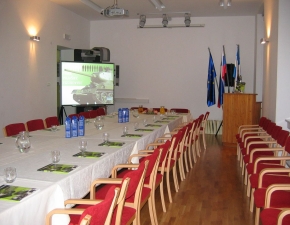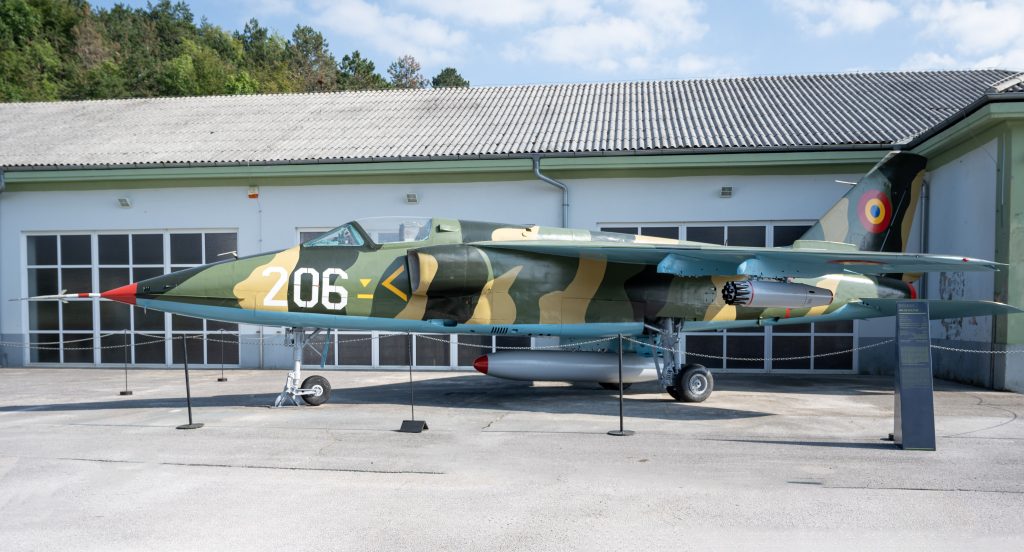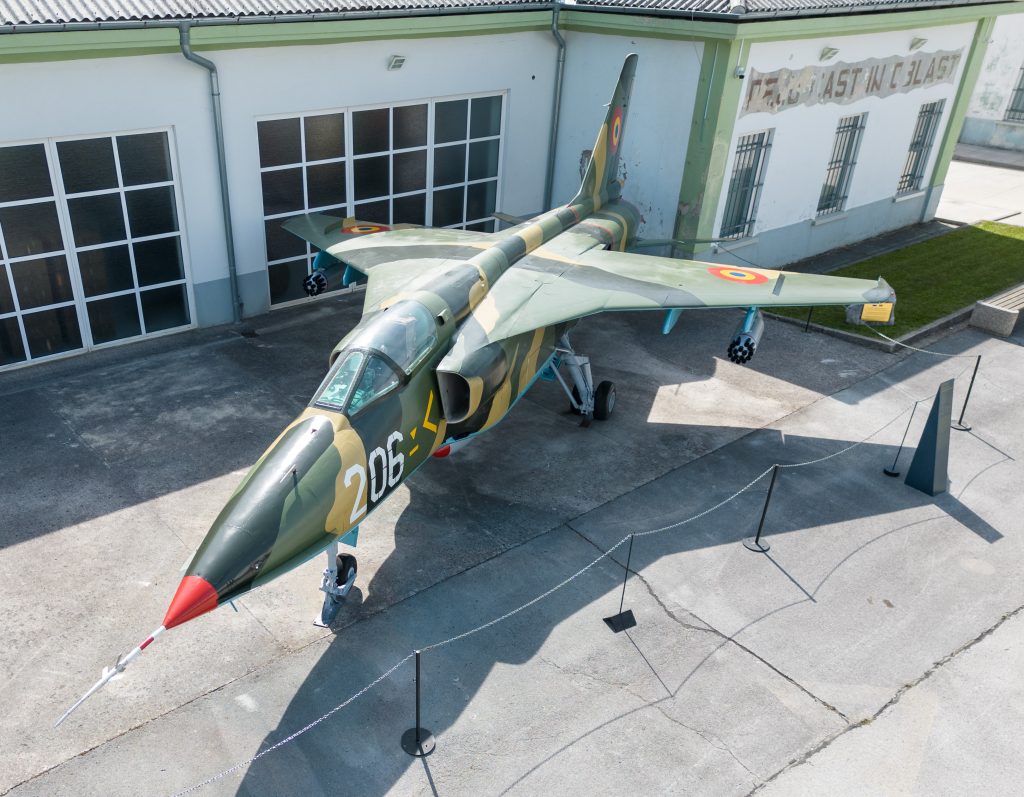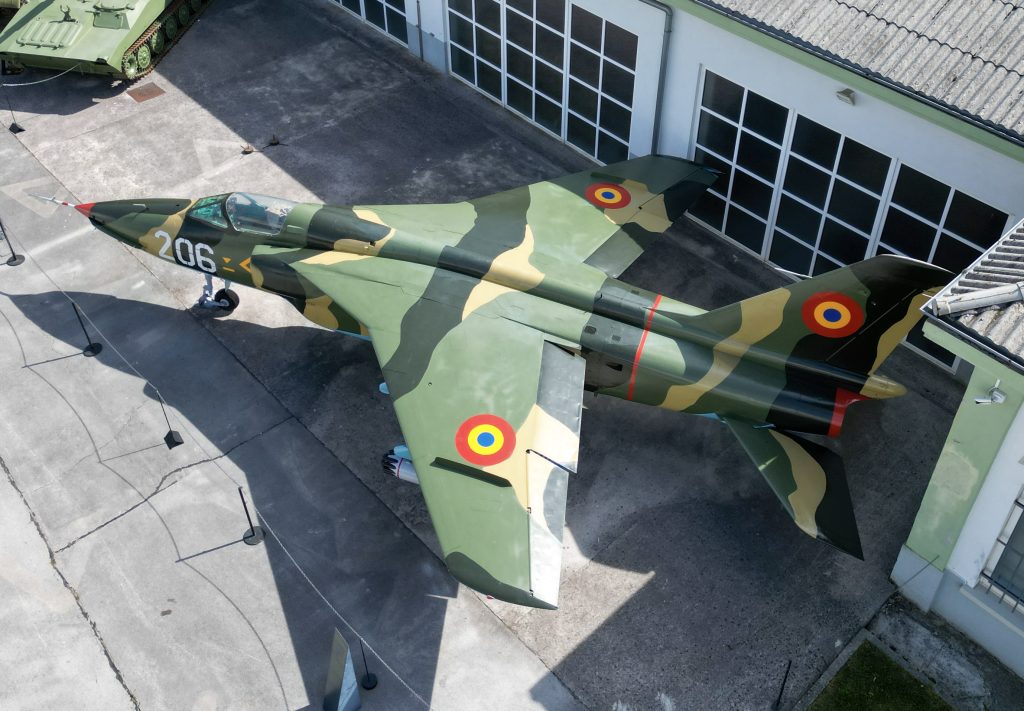
VULTUR – The aircraft restored to its original glory.
Slovenia acquired an IAR-93 attack aircraft from Romania in 2014. Due to its exposure to weather conditions, it needed to be restored and brought back to its former glory. The restoration was originally planned to be completed in the spring, but due to prolonged adverse weather conditions, the work was delayed. Wind and storms threatened the restoration process and extended the refurbishment by several months. To restore and bring the shine back to this valuable exhibit, the company Granos, in collaboration with experts from the Military Museum of the Slovenian Armed Forces and the Park of Military History, invested 250 working hours.

The initiative for donating a Romanian aircraft to Slovenia came more than a decade ago from the Association of Military Pilots of All Generations and Friends of Military Aviation, as well as the Slovenian-Romanian Business Club Triglav–Carpaţi. On the Slovenian side, the project involved the Military Museum of the Slovenian Armed Forces and the Park of Military History in Pivka. The transportation of the exhibit at that time was generously carried out by the transport company CEM-TIR.

ABOUT THE SOKO J-22 OREL/IAR-93 VULTUR AIRCRAFT
In the late 1960s, the Yugoslav Air Force began contemplating the development of a new ground-attack aircraft. After analyzing various factors and considering the cost-effectiveness ratio, the leadership of military aviation and the national authorities decided to develop a plane with a high subsonic speed, which would also be capable of achieving supersonic speeds under specific conditions.

Due to the high costs involved, they considered collaborating with an external partner. Romania emerged as the ideal partner at the time because it was revitalizing its military aviation industry. On May 20, 1971, a cooperation agreement was signed between the two countries, which included a provision for splitting the costs in half. The project was named YUROM, and the result of this collaboration was a high-wing, twin-engine ground-attack aircraft with a metal construction semi-monocoque design. In Yugoslavia, it was named the Soko J-22 Orel; in Romania, it was called the IAR-93 Vultur (Eagle). The project took inspiration from the British-French SEPECAT Jaguar aircraft, completed a few years before the Orel/Vultur aircraft.
The Orel project was designed in the aeronautical institutes in Žarkovo and Bucharest, and production took place in Mostar (Soko), Pančevo (Utva), and Craiova (I.R.Av.). The Romanian and Yugoslav prototypes took their first flights on the same day, October 31, 1974. Some improvements were made in the second half of the 1970s, and serial production commenced. Both countries collectively produced over 200 units of the aircraft in various versions. In Yugoslavia, a reconnaissance version was also manufactured.

OREL IN SLOVENIA
The first two squadrons in the Yugoslav Air Force equipped with Orel aircraft were the 351st Reconnaissance Squadron and the 238th fighter-bomber squadron of the 82nd Air Brigade, stationed in Cerklje ob Krki. Following a mortar attack on the airfield on June 27, 1991, the aircraft were gradually relocated to Croatia, Bosnia, and Herzegovina airports. As the conflict expanded within the territory of Yugoslavia, the aircraft were eventually moved to Belgrade.
TECHNICAL SPECIFICATIONS
- Length: 14.9 meters
- Height: 4.53 meters
- Wingspan: 9.3 meters
- Wing Area: 26 square meters
- Aircraft Weight: 5,550–5,750 kg; maximum weight 10,600–11,080 kg
- Speed: 1,130 km/h (0.95 Mach)
- Range: 1,320 km
- Maximum Altitude: 13,600 meters
- Engines: 2 × Rolls-Royce Viper Mk. 632-41; 633-41; 633-47; 663-41
- Armament: Two side-mounted GŠ-23L cannons with 200 rounds each; one under-fuselage and four under-wing hardpoints for up to 500 kg bombs and rockets; total payload capacity of 1,733 kg.


